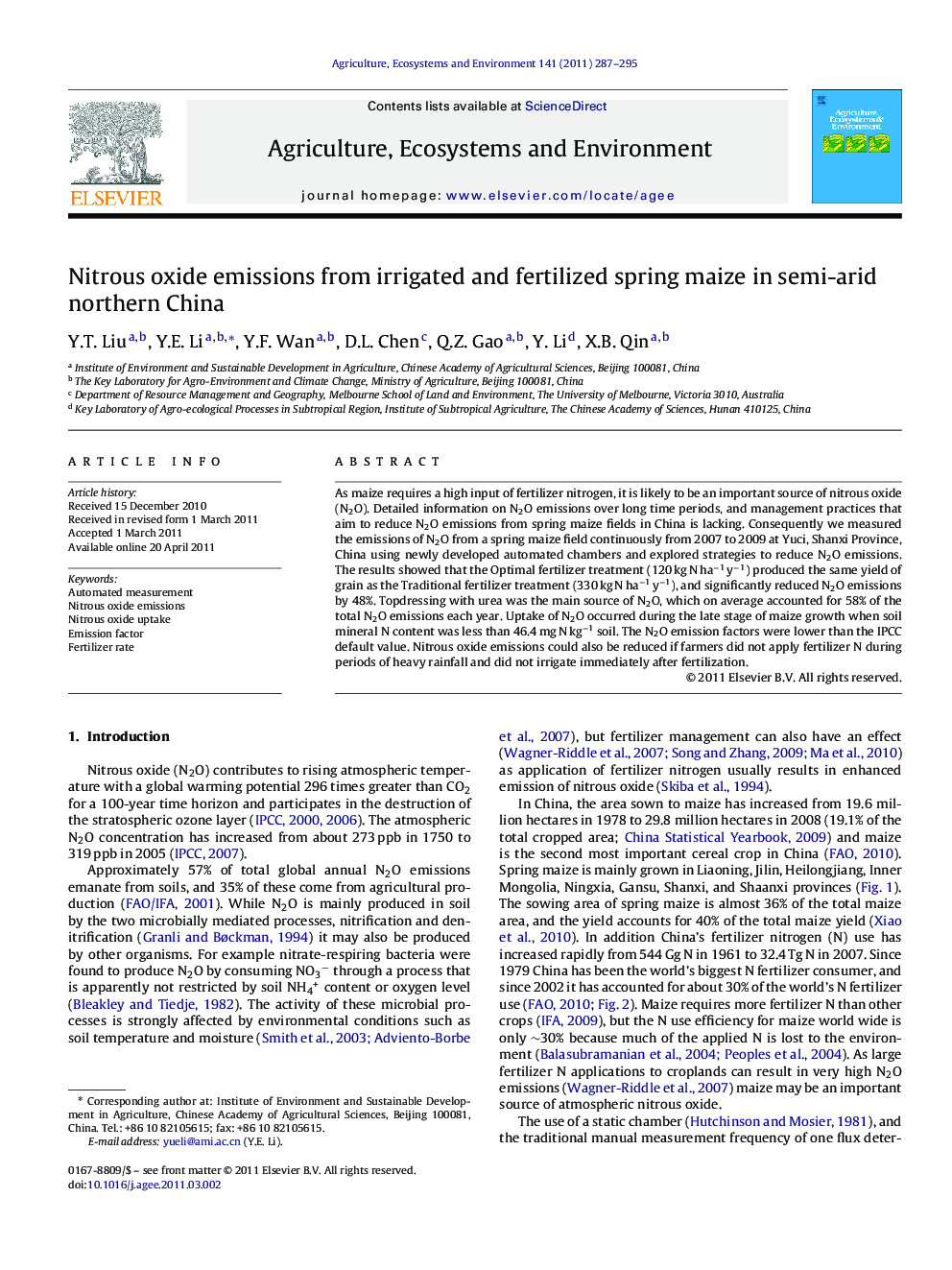| کد مقاله | کد نشریه | سال انتشار | مقاله انگلیسی | نسخه تمام متن |
|---|---|---|---|---|
| 2414821 | 1552108 | 2011 | 9 صفحه PDF | دانلود رایگان |

As maize requires a high input of fertilizer nitrogen, it is likely to be an important source of nitrous oxide (N2O). Detailed information on N2O emissions over long time periods, and management practices that aim to reduce N2O emissions from spring maize fields in China is lacking. Consequently we measured the emissions of N2O from a spring maize field continuously from 2007 to 2009 at Yuci, Shanxi Province, China using newly developed automated chambers and explored strategies to reduce N2O emissions. The results showed that the Optimal fertilizer treatment (120 kg N ha−1 y−1) produced the same yield of grain as the Traditional fertilizer treatment (330 kg N ha−1 y−1), and significantly reduced N2O emissions by 48%. Topdressing with urea was the main source of N2O, which on average accounted for 58% of the total N2O emissions each year. Uptake of N2O occurred during the late stage of maize growth when soil mineral N content was less than 46.4 mg N kg−1 soil. The N2O emission factors were lower than the IPCC default value. Nitrous oxide emissions could also be reduced if farmers did not apply fertilizer N during periods of heavy rainfall and did not irrigate immediately after fertilization.
► Optimal fertilizer treatment (120 kg N ha−1 y−1), which produced the same yield of grain as the Traditional fertilizer treatment (330 kg N ha−1 y−1) and significantly reduced N2O emission by 48%.
► Topdressings with urea were the main sources of N2O which accounted for 57.7% of the total N2O emission on average.
► Uptake of N2O also occurred during the late stage of maize growth when the 0–20 cm soil mineral N content was less than 46.4 mg kg−1.
► The N2O emission factors were lower than the IPCC default value.
► An effective way of reducing N2O emissions was to advise farmers not to apply fertilizer N during periods of heavy rainfall and not to irrigate immediately after fertilization.
Journal: Agriculture, Ecosystems & Environment - Volume 141, Issues 3–4, May 2011, Pages 287–295